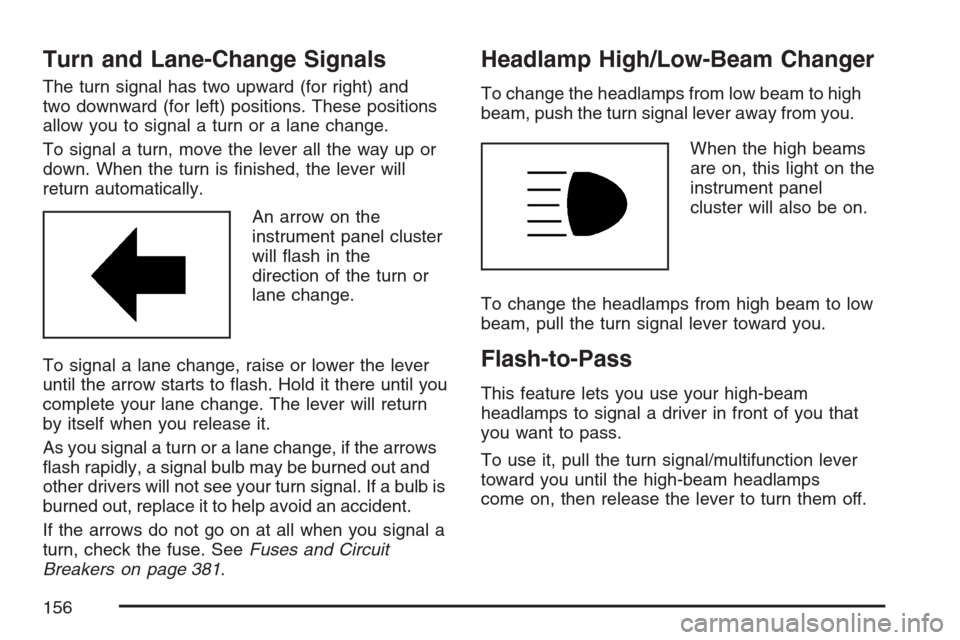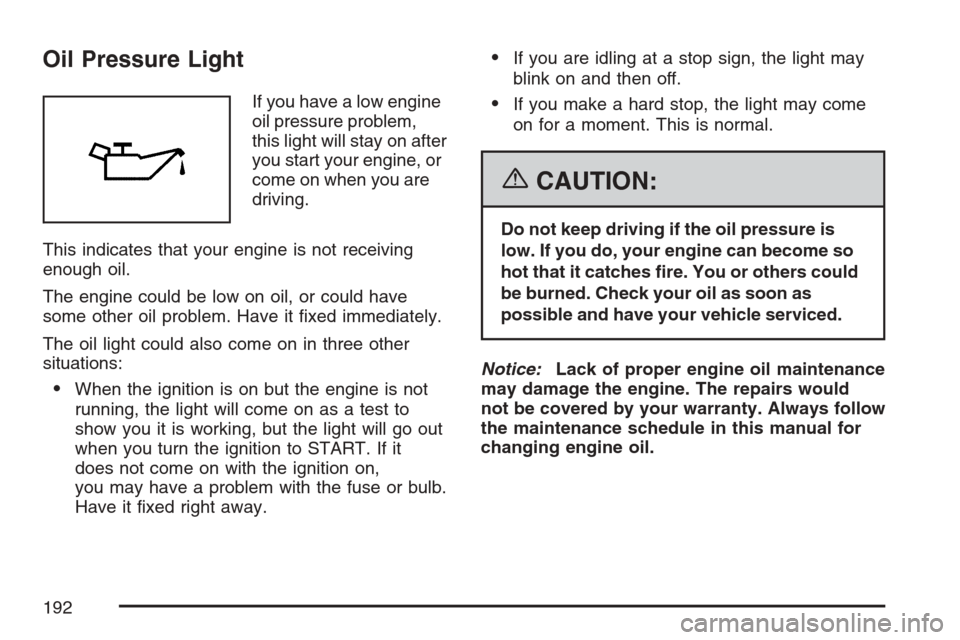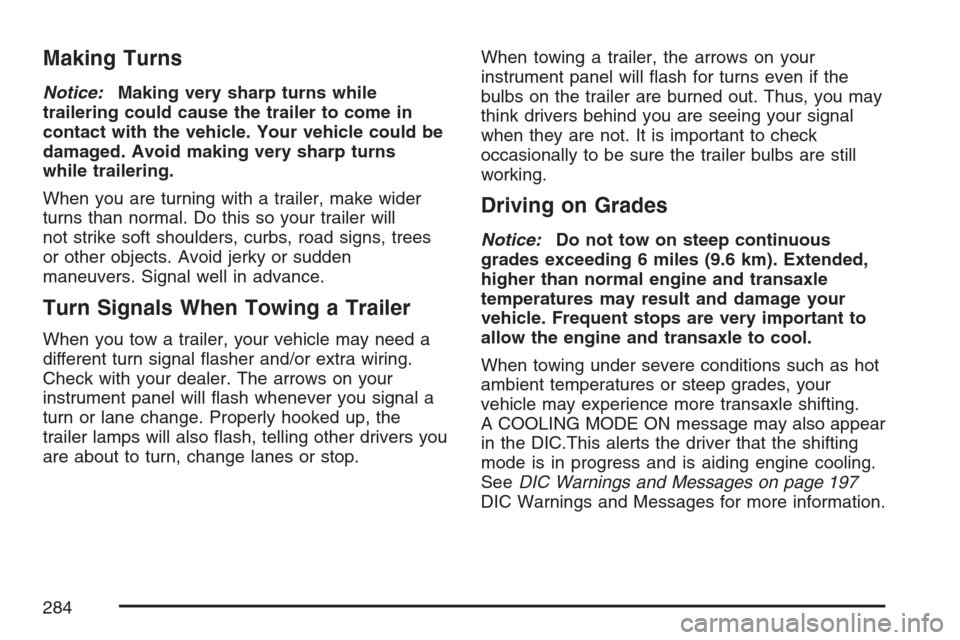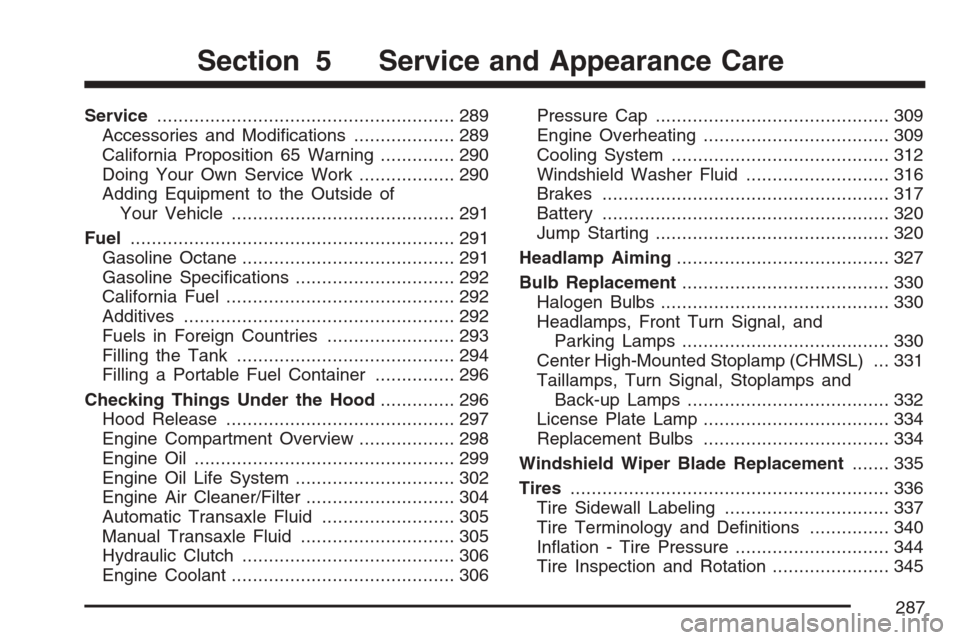Page 2 of 446
Service and Appearance Care
.................. 287
Service
................................................. 289
Fuel
...................................................... 291
Checking Things Under the Hood
......... 296
Headlamp Aiming
................................. 327
Bulb Replacement
................................ 330
Windshield Wiper Blade Replacement
.... 335
Tires
..................................................... 336
Appearance Care
.................................. 370
Vehicle Identi�cation
............................. 379Electrical System
.................................. 380
Capacities and Speci�cations
................ 386
Maintenance Schedule
.............................. 389
Maintenance Schedule
.......................... 390
Customer Assistance Information
............. 411
Customer Assistance and Information
..... 412
Reporting Safety Defects
...................... 428
Index
.......................................................... 433
2
Page 156 of 446

Turn and Lane-Change Signals
The turn signal has two upward (for right) and
two downward (for left) positions. These positions
allow you to signal a turn or a lane change.
To signal a turn, move the lever all the way up or
down. When the turn is �nished, the lever will
return automatically.
An arrow on the
instrument panel cluster
will �ash in the
direction of the turn or
lane change.
To signal a lane change, raise or lower the lever
until the arrow starts to �ash. Hold it there until you
complete your lane change. The lever will return
by itself when you release it.
As you signal a turn or a lane change, if the arrows
�ash rapidly, a signal bulb may be burned out and
other drivers will not see your turn signal. If a bulb is
burned out, replace it to help avoid an accident.
If the arrows do not go on at all when you signal a
turn, check the fuse. SeeFuses and Circuit
Breakers on page 381.
Headlamp High/Low-Beam Changer
To change the headlamps from low beam to high
beam, push the turn signal lever away from you.
When the high beams
are on, this light on the
instrument panel
cluster will also be on.
To change the headlamps from high beam to low
beam, pull the turn signal lever toward you.
Flash-to-Pass
This feature lets you use your high-beam
headlamps to signal a driver in front of you that
you want to pass.
To use it, pull the turn signal/multifunction lever
toward you until the high-beam headlamps
come on, then release the lever to turn them off.
156
Page 192 of 446

Oil Pressure Light
If you have a low engine
oil pressure problem,
this light will stay on after
you start your engine, or
come on when you are
driving.
This indicates that your engine is not receiving
enough oil.
The engine could be low on oil, or could have
some other oil problem. Have it �xed immediately.
The oil light could also come on in three other
situations:
When the ignition is on but the engine is not
running, the light will come on as a test to
show you it is working, but the light will go out
when you turn the ignition to START. If it
does not come on with the ignition on,
you may have a problem with the fuse or bulb.
Have it �xed right away.
If you are idling at a stop sign, the light may
blink on and then off.
If you make a hard stop, the light may come
on for a moment. This is normal.
{CAUTION:
Do not keep driving if the oil pressure is
low. If you do, your engine can become so
hot that it catches �re. You or others could
be burned. Check your oil as soon as
possible and have your vehicle serviced.
Notice:Lack of proper engine oil maintenance
may damage the engine. The repairs would
not be covered by your warranty. Always follow
the maintenance schedule in this manual for
changing engine oil.
192
Page 284 of 446

Making Turns
Notice:Making very sharp turns while
trailering could cause the trailer to come in
contact with the vehicle. Your vehicle could be
damaged. Avoid making very sharp turns
while trailering.
When you are turning with a trailer, make wider
turns than normal. Do this so your trailer will
not strike soft shoulders, curbs, road signs, trees
or other objects. Avoid jerky or sudden
maneuvers. Signal well in advance.
Turn Signals When Towing a Trailer
When you tow a trailer, your vehicle may need a
different turn signal �asher and/or extra wiring.
Check with your dealer. The arrows on your
instrument panel will �ash whenever you signal a
turn or lane change. Properly hooked up, the
trailer lamps will also �ash, telling other drivers you
are about to turn, change lanes or stop.When towing a trailer, the arrows on your
instrument panel will �ash for turns even if the
bulbs on the trailer are burned out. Thus, you may
think drivers behind you are seeing your signal
when they are not. It is important to check
occasionally to be sure the trailer bulbs are still
working.
Driving on Grades
Notice:Do not tow on steep continuous
grades exceeding 6 miles (9.6 km). Extended,
higher than normal engine and transaxle
temperatures may result and damage your
vehicle. Frequent stops are very important to
allow the engine and transaxle to cool.
When towing under severe conditions such as hot
ambient temperatures or steep grades, your
vehicle may experience more transaxle shifting.
A COOLING MODE ON message may also appear
in the DIC.This alerts the driver that the shifting
mode is in progress and is aiding engine cooling.
SeeDIC Warnings and Messages on page 197
DIC Warnings and Messages for more information.
284
Page 287 of 446

Service........................................................ 289
Accessories and Modi�cations................... 289
California Proposition 65 Warning.............. 290
Doing Your Own Service Work.................. 290
Adding Equipment to the Outside of
Your Vehicle.......................................... 291
Fuel............................................................. 291
Gasoline Octane........................................ 291
Gasoline Speci�cations.............................. 292
California Fuel........................................... 292
Additives................................................... 292
Fuels in Foreign Countries........................ 293
Filling the Tank......................................... 294
Filling a Portable Fuel Container............... 296
Checking Things Under the Hood.............. 296
Hood Release........................................... 297
Engine Compartment Overview.................. 298
Engine Oil................................................. 299
Engine Oil Life System.............................. 302
Engine Air Cleaner/Filter............................ 304
Automatic Transaxle Fluid......................... 305
Manual Transaxle Fluid............................. 305
Hydraulic Clutch........................................ 306
Engine Coolant.......................................... 306Pressure Cap............................................ 309
Engine Overheating................................... 309
Cooling System......................................... 312
Windshield Washer Fluid........................... 316
Brakes...................................................... 317
Battery...................................................... 320
Jump Starting............................................ 320
Headlamp Aiming........................................ 327
Bulb Replacement....................................... 330
Halogen Bulbs........................................... 330
Headlamps, Front Turn Signal, and
Parking Lamps....................................... 330
Center High-Mounted Stoplamp (CHMSL) ... 331
Taillamps, Turn Signal, Stoplamps and
Back-up Lamps...................................... 332
License Plate Lamp................................... 334
Replacement Bulbs................................... 334
Windshield Wiper Blade Replacement....... 335
Tires............................................................ 336
Tire Sidewall Labeling............................... 337
Tire Terminology and De�nitions............... 340
In�ation - Tire Pressure............................. 344
Tire Inspection and Rotation...................... 345
Section 5 Service and Appearance Care
287
Page 330 of 446
Bulb Replacement
For the proper type of replacement bulbs, see
Replacement Bulbs on page 334.
For any bulb changing procedure not listed in this
section, contact your dealer.
Halogen Bulbs
{CAUTION:
Halogen bulbs have pressurized gas
inside and can burst if you drop or
scratch the bulb. You or others could be
injured. Be sure to read and follow the
instructions on the bulb package.
Headlamps, Front Turn Signal, and
Parking Lamps
A. Headlamp
B. Turn Signal/Parking Lamp
330
Page 331 of 446
To replace the headlamp, turn signal, or parking
lamp bulb, do the following:
1. Turn the wheel to access the wheel well.
2. Remove the fasteners to access the headlamp
and the turn signal/parking lamp bulbs.
3. Reach in behind the wheel well liner and
locate the bulb you need to change.
4. Turn the bulb socket counterclockwise to
remove.5. Pull the old bulb out of the socket.
6. Install a new bulb.
7. Reverse Steps 1 through 4 to reinstall.
Center High-Mounted Stoplamp
(CHMSL)
To replace the center high-mounted stoplamp
bulb, do the following:
1. Open the liftgate. SeeLiftgate on page 106
for more information.
2. Remove the center trim located near the top
of the liftgate.
331
Page 332 of 446
3. Locate the bulb assembly.
4. Locate the bulb you wish to change.
5. Turn the bulb socket counterclockwise to
remove.
6. Pull the bulb straight out of the socket.
7. Install a new bulb.
8. Reverse the steps to reinstall.Taillamps, Turn Signal, Stoplamps
and Back-up Lamps
A. Stoplamp/Taillamp/Turn Signal
B. Back-up
332